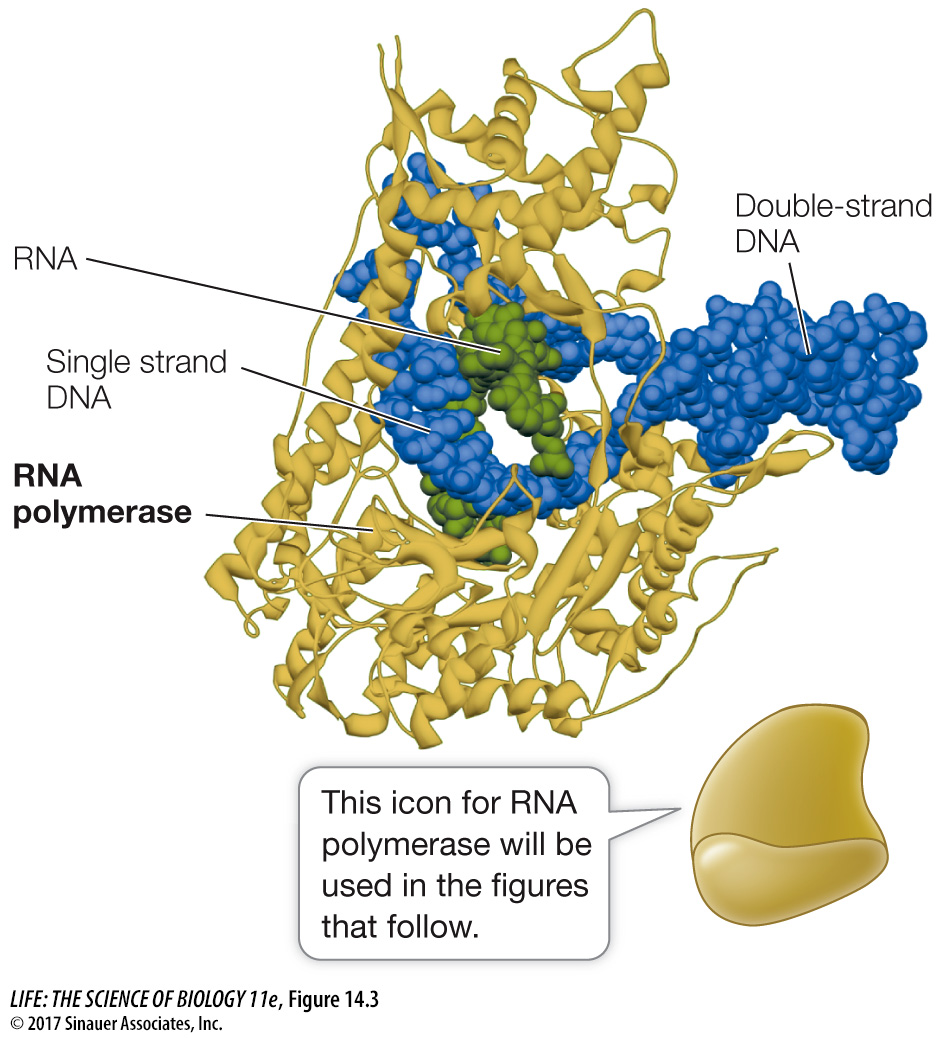RNA polymerases share common features
RNA polymerases from both prokaryotes and eukaryotes catalyze the synthesis of RNA from the DNA template. There is only one kind of RNA polymerase in bacteria, whereas there are several kinds in eukaryotes; however, they all share a common structure (Figure 14.3). Like DNA polymerases, RNA polymerases catalyze the addition of nucleotides in a 5′-to-

Figure 14.3 RNA Polymerase Interacting with DNA The RNA polymerase enzyme depicted (in green) is from bacteriophage T7, but it is representative of most other RNA polymerases. Note the size relationship between enzyme and DNA. The inset indicates how this enzyme will be represented in the figures that follow.